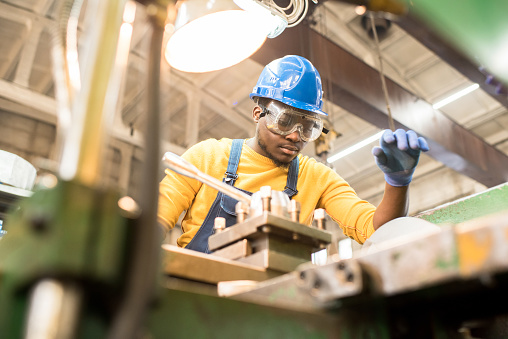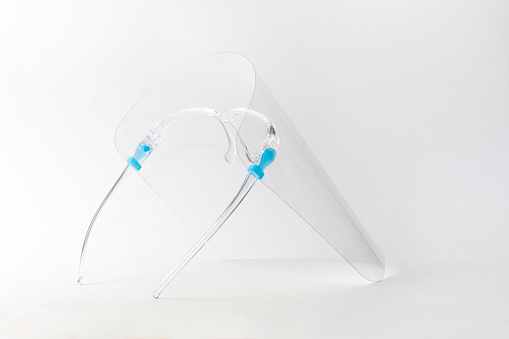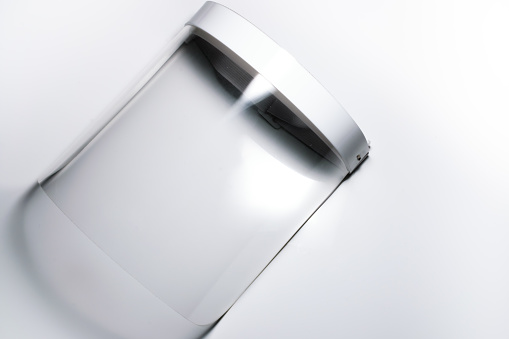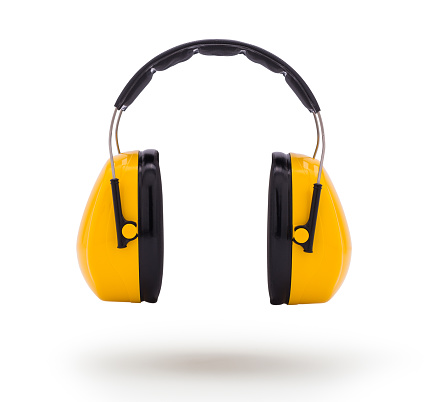Common Safety Apparatus For A Machinist

The general safety requirements for a machinist may vary slightly from a site worker but before going into that let us discuss the general safety requirements for machining which includes:
FACE AND EYES PROTECTION


When working with machines the unexpected could happen so it is recommended that one wears protecting equipment against the face and the eyes.
Though the risk of injuring the eyes or face may vary from one operation to another, it has become a standard safety rule to always shield the face or the eyes when carrying out most of the operations in the workshop.
Consider a machinist making a thread on ductile steel material and a machinist making a thread on brittle steel material, the risk of injuring the face or the eyes is higher on the latter.
The reason is that brittle materials create discontinuous chips when being operated in machines such as lathe machines and such discontinuous chips can fly in any direction during the machining process while continuous chips will not.
Working with ductile steel materials reduces the risk of injury to the eyes because they usually create continuous chips that hardly break up as it rolls out of the machine’s cutting tool.
Thereby making it difficult to fly unexpectedly and injure the face or the eyes of the machinist.
For the above reason, the general safety standard recommends every machinist wear a face shield and eyes goggle during machine operation.
FOOT PROTECTION

The reason foot protection became a general safety rule is because it had been found that every industrial activity put the foot at risk.
Consider a falling object that can hit the foot, consider a sharp object on the floor that can cut the foot, consider a hot surface or hot object on the floor that can be accidentally matched upon, and get the foot burnt.
Consider a reactive chemical poured on the floor that can damage both leather shoes and foot, and so many other considerations which have made it a norm to put foot safety into consideration in every industrial operation.
It is a fact that most industries spend millions of dollars to acquire standard safety equipment for their staff knowing that their safety determines their confidence and will yield more productivity to the industry.
Safety boots having a steel plate below it and above it, which is below the feet and above the feet locations had been recommended as the standard safety boot for all the workshop and site workers.
The reason for the above recommendation is because sharp objects cannot penetrate the steel plates to injure the foot nor can hot surface pass through the steel plate to get the foot burnt, also falling objects cannot hit the foot surface because of the steel plate covering it.
However, in a severe situation, the top steel plate may get deformed but will not allow the foot to be damaged so; it keeps the foot surface safe.
The disadvantage these kinds of boots have is the weight. They are known to be heavy which makes some workers frown at wearing them but when the industry recommends them as their standard, the workers will have no other option since it is for mutual advantage between both sides.
So a machinist operating a machine in a workshop may get the foot injured when the object clamped on the machine table accidentally fall from its location to the machine floor, this can happen when the object was not clamped correctly or the machine was operating at a high speed.
HAND PROTECTION

Though not actually specified in the general safety rules, machinists operating machines with rotating parts can be advised not to wear hand gloves. When looking at the risk involved in wearing hand gloves in such a condition, it outweighs the benefits.
The purpose of wearing a hand glove is to protect the hand, especially the palms and fingers from cuts, slippery, falling objects, etc. but while working on rotating equipment or machine in the workshop wearing a hand glove can put the palm and fingers at risk of being safe.
Most of the hand gloves for industrial operations were made with leather and rubber (for chemical & electrical engineers).
If the leather hand glove is to approach a rotating part of a machine like a drill bit of a drilling machine or the rotating chuck and collets of a lathe machine it has the possibility of dragging the leather.
Especially at high speed which can cause the fingers to be driven into the rotating parts and cause a severe accident.
So safety recommends not using hand gloves in such conditions.
However, in regard to the above rule, the Western Illinois University suggested in their machine shop safety rules article regarding lathe machine operation that machinists should stay clear off every rotating part of the machine once it is in operation and this rule puts the risk of wearing hand gloves low for the machinists.
EAR PROTECTION

The human ear has a noise limit and operating or living in noisy areas can affect human overall activities because it sends busy signals to the brain and sometimes prevents one from nights of sleep.
So safety recommends machinists wear earmuffs or earplugs during machine operation to reduce the risk of hearing defects in the long run.
Though the risk of hearing defects varies from one industrial operation to another, it is usually higher for those working in plant rooms, Power generation houses, Flow stations, and busy Workshops.
NOSE PROTECTION


There are many unseen hazards associated with workshop activities including:
The waste chemicals in the tins located in the workshop,
the rust and corroded metal parts in the workshop,
the unseen chemical reactions of chemicals used in the workshop activities, the micro metal chips coming out from the cutting tool,
the dust, and particles coming from activities of others within the workshop.
For these reasons and more, it is recommended that machinists wear nose masks to reduce or avoid the entrance of harmful particles into their bodies.
There are many other rules which shall be discussed later so that proper research can be done on them such include; Rules in operating individual machines in the workshop and the best way to work in the workshop, etc.
The above few rules have been highlighted however other topics relating to this will still become so keep up to date with us by subscribing to our updates through email or following us via social media.

